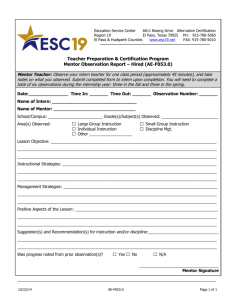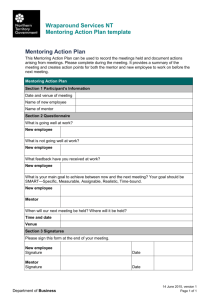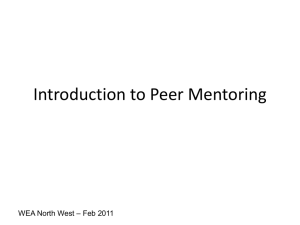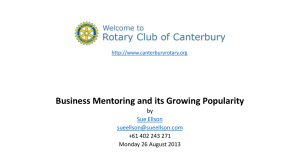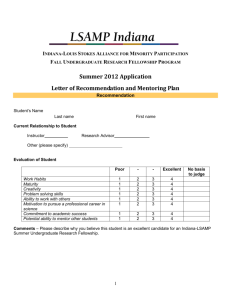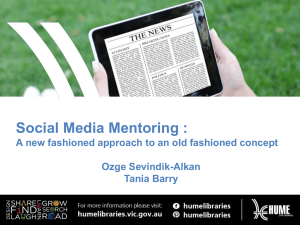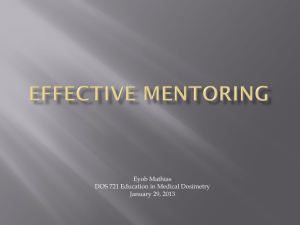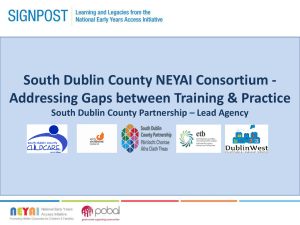TAPP Mentor PowerPoint
advertisement
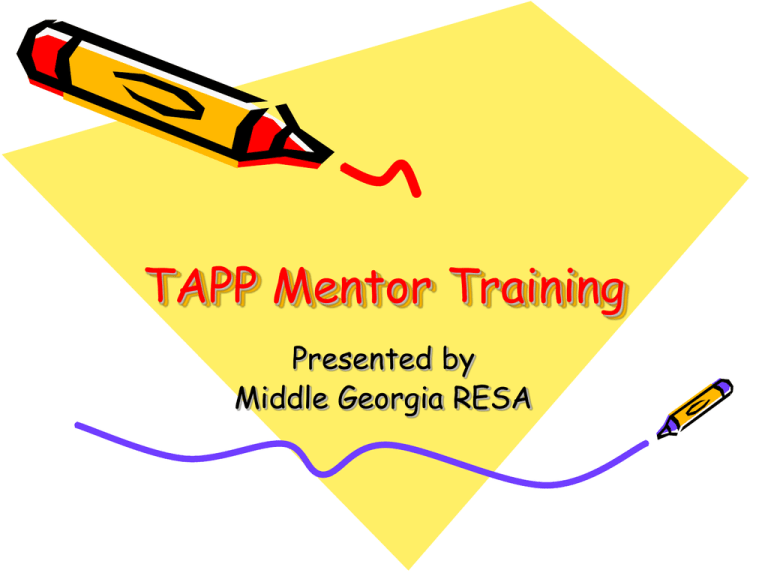
TAPP Mentor Training Presented by Middle Georgia RESA Activating Strategy Think about… What do you already know about mentoring? “How well I remember my first day of teaching…I felt so unprepared! What I really wanted was a mentor— someone who would help me if I made mistakes, or better yet, to give me tips so that I wouldn’t make the mistakes in the first place.” The Phases of First-Year Teaching • • • • • Anticipation Survival Disillusionment Rejuvenation Reflection Relationship Building • Create an environment that includes mutual trust, honesty, respect and a willingness to work together. • Be sensitive to the beginning teacher’s concerns. • Be enthusiastic towards teaching. • Be willing to invest the time! • Healthy mentoring relationships are professional in nature and are evolutionary rather than static. • The purpose of the relationship is to enable the new teacher to acquire new knowledge, skill and standards of professional competence. A Mentor Is… • One who helps teachers to recognize what they know and can do. • One who assists teachers as they strengthen their ability to make more effective use of what they know and do. • One who supports teachers as they learn and do more. A Mentor Is Not… • A supervisor • One who ensures that teachers meet requirements of their positions at a satisfactory level and continue to do so over time The Critical Qualities of a Mentor • EXPERTISE - content area, teaching strategies, differentiation, special ed modifications, etc. • TRUST – of teachers and administrators. • FACILITATOR – of dialogue and team work, assessing teacher needs, providing support and feedback, etc. Suggestions: • • • • • • • Smile Open stance/body posture Forward Lean Tone Eye Contact Nods Physical setting Conferencing Skills • Conferencing is the heart of mentoring. • Mentors do most of their work through meeting and talking with beginning teachers. • Mentors actively listen and provide non-judgmental feedback. • TAPP Intern provides the focus of the conference unless a specific event is to be discussed. • Problem solving occurs when the intern offers alternatives and ideas. Six Stages of Listening and Questioning • Stage 1 – Door Openers – indicate you desire a two-way conversation. • Stage 2 – Passive Listening – bite your lip and listen. • Stage 3 – Acknowledgement Responses – Eye contact, nodding, comments like, “I hear you” and “I understand.” • Stage 4 – Active Listening – responses give evidence you are listening. • Stage 5 – Closing the Gap – Identify differences in your perception and intern’s perception. • Stage 6 – Concluding the Discussion – Create a framework for next steps, summarize conclusions, set date, time, and location for follow-up discussion. Observation Techniques • Overview and Scripting – write down only facts, not opinions. • Selective Verbatim – write down teacher/student talk, reward and praise, directions, etc. • Verbal Flow – use a seating chart to track when the teacher speaks to a student or when a student speaks to another student. Observation Techniques • At Task – Use a seating chart to track “on-task” behavior. A=At Task, B=Stalling, C=School work other than requested, D=Out of seat, E=Talking to others. Observation Techniques • Sampling – Prepare a chart showing a column for time in four minute intervals and column for behaviors. Record the primary behavior by teacher or student. P=Presenting, O=Observing, M=Managing, H=Helping, I=Individualized Instruction Observation Techniques • Tally Marks – Create a chart showing various categories: -interaction w/teacher initiated by students -praise statements -students called on with or without hand raised. -etc. • Place a tally mark under the appropriate category. • Class Traffic – use a seating chart to show teacher and student movement.
